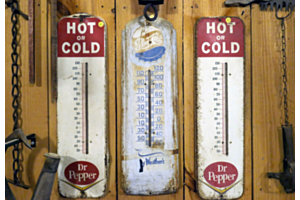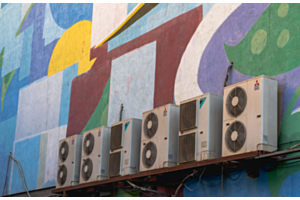Mini Split Concrete Pad Sizing

One of the most important parts of your ductless mini split system is the compressor or condenser. This outdoor component contains the refrigerant that converts the air to the appropriate temperature so it can pump through the indoor air-handling unit. At the time of mini split installation, your technician will likely recommend a concrete pad to put your compressor on. This is also known as an air conditioning pad.
Although it seems like something basic and thus skippable, this concrete pad is very beneficial. The pad prevents the compressor from rattling and vibrating when the ductless mini split system is on and running. This movement can wreck internal compressor components that can shorten the life of your mini split system. Long before that happens, the rattling and/or buzzing that the shifting compressor makes can drive you nuts.
The compressor pad keeps insects and other critters from being able to easily access your mini split system. The pad also prevents the compressor from having direct contact with the ground, which can keep the mini split system running its best no matter the season.
How do you know what concrete pad size you’ll need for the compressor? We recommend contacting the company you purchased the mini split through and asking about the compressor’s dimensions provided that information isn’t readily available elsewhere, such as online. If you have a patch of concrete that matches the size of the compressor, then you shouldn’t have to do any extra work.
Should your yard be mostly grassy, then you’ll have to pour a pad of concrete that matches the dimensions of the compressor. The concrete pad should be several inches bigger on every side just so you have some leeway when the technicians install the compressor. Buying concrete to pour isn’t very expensive; some homeowners have reported the job costs about $100. Definitely be careful when working with concrete so it doesn’t dry on surrounding areas or yourself!
When deciding where to pour the concrete pad, you have to keep some considerations in mind. You don’t want the compressor near any flowers, shrubs, trees, or greenery. If the branches can get in the way of the compressor, then your indoor air-handling units might not get airflow to the same degree that they usually do. The compressor should be shaded from direct sun too. Overhead protection from an awning or roof is fine, as is the shelter of a tree.
If you’ve talked to your technician and your yard is so small that you can’t pour a concrete pad anywhere, they can always mount the compressor to your wall. In that case, the compressor should be at least five inches away from an adjacent wall if not further. If there is anything overhead of the compressor, that needs to be 20 inches higher from the top of the compressor up.
If you’re ready to discuss your ductless mini split options, call our professionals at PowerSave AC. We sell all sorts of ductless mini split systems, including single-zone and multi-zone splits.
Sources:
https://www.princetonair.com/blog/where-are-best-places-install-ductless-mini-splits






